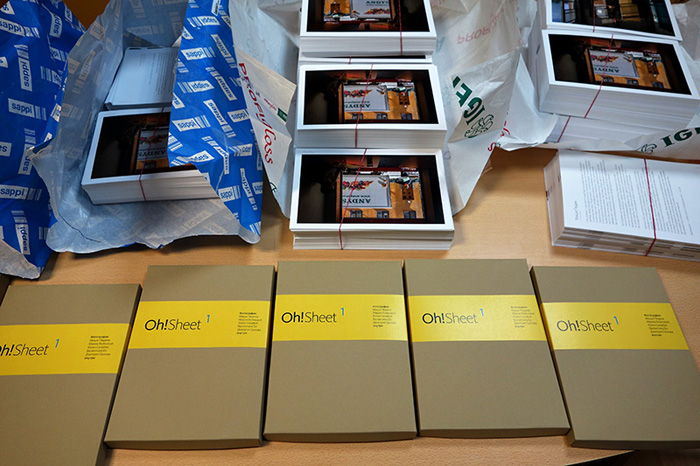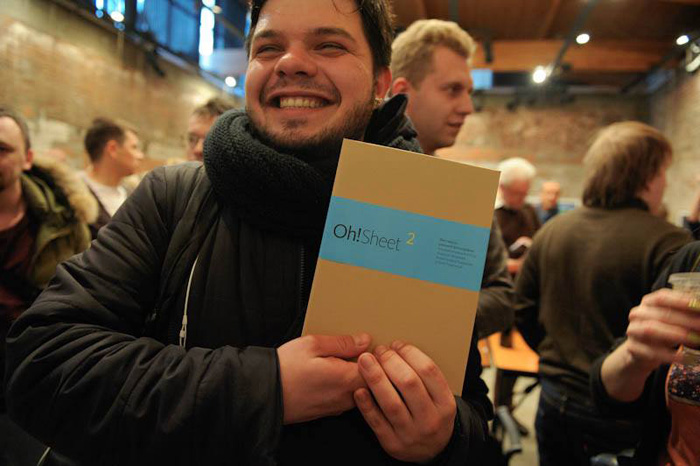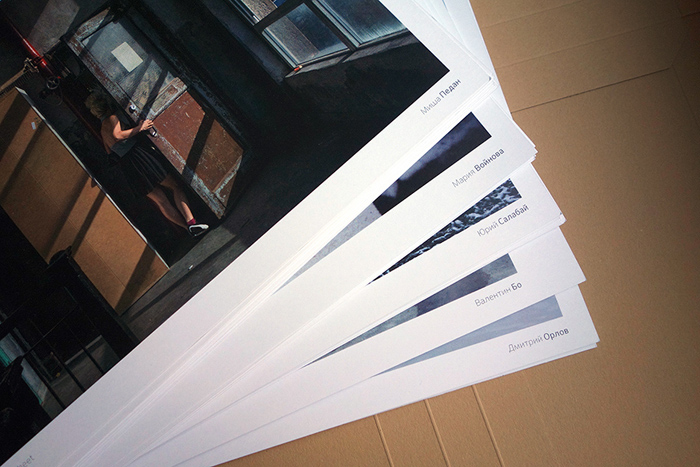Yulia Rodnina have considered publishing her own magazine about photography since 2008, when she left Digital Photo, a publication where she had been employed as a build-editor. She had plenty of skills and experience – but no investments, no business plan, no staff, that’s why the idea didn’t come to life sooner. In 2013 Yuliya shared her thoughts about the magazine with her friend Alexander Rudakov, organizer of Street Photography Festival and that’s when things started gaining momentum. Together they prepared the first edition of Oh!Sheet, which was published in small quantity, and today they are already working on the 3rd edition.
Bird In Flight spoke to the authors of the project about Oh!Sheet – what it is, who is its target audience, how it stands apart from other publications and whether Juliya and Alexander expect it to become commercially successful.

The magazine is dedicated to amateur photography that allows room for the element of exploration, and an unusual outlook on ordinary things. “What drives the history of photography is not studio shoots but homemade photos. We take interest in the images that we don’t see in the press and at exhibitions partly because they are different. Wanted to make a magazine about that different type of photo”, – Yuliya explains.
Following in the footsteps of the original plan to create a conceptually different magazine, the authors of the project decided to depart from a standard managing system as well. For instance, Oh!Sheet doesn’t have a traditional chief editor which allows it to go without monotonous editor letters in each copy. Instead, Yuliya and Alexander intend to invite curators whose taste they trust.
The decision was to dedicate the entire magazine to photography, meaning to focus on the very essence – avoid writing about methods of shooting or having any articles at all for that matter. They ended up with a laconic format: a publication that looks like a 20×15 cm stack of 50-60 photographs and a few pages of introduction from the authors. Everything is neatly packaged in a cardboard box.
– But people might think of it as – Oh, shit!
– Wouldn’t it be great though! Oh!Sheet!
Unconventional presentation proved to be beneficial in manufacturing (a team of two can handle the job, no serious budget or editorial stuff required), as well as in creative way. “The publication turned out very “photographical”, visibly reminding a photographer’s portfolio. It can serve as a portable exposition or as a coffee table slideshow – admire a new picture every day, – Alexander Rudakov states. – Alexander Astashov helped with the concept and design. We came up with the name together. We were going through different words and someone said: “So a piece of paper is a sheet, right?”. – “But people might think of it as – Oh, shit!”. – “Wouldn’t it be great though! Oh!Sheet!”. That’s how our art magazine ended up with a slightly naughty name.
{
“img”: “/wp-content/uploads/2014/07/DSC01750_ps_sm.jpg”,
“alt”: “Oh!Sheet 1”
},
{
“img”: “/wp-content/uploads/2014/07/DSC01597_ps_sm.jpg”,
“alt”: “Oh!Sheet 2”
}
Mikhail Pedan, a Ukrainian photographer, was invited to be the curator of the first issue of Oh!Sheet dedicated to street photography. He wasn’t expected to accept the offer as the project founders understood all too well that not every experienced professional who made a name for himself would agree to work with a yet unknown magazine, especially without compensation.
“We didn’t even know at the moment that we hit the bull’s-eye, – Yulya Rodnina recalls. – Street photography was exactly what Misha did, the subject interested him, he agreed and engaged – pro bono – a team of photographers whose pieces were included in the first edition: Maria Voynova, Yuliya Salabaya, Valentina Bo and Dmitriy Orlov. So we had ten photos from each of the five artists”.
Later on, the manufacturing difficulties began. For instance, they had hard time finding a typography that would agree to print out 70 sets of 50 photographs at a reasonable price. Large typographies weren’t interested in such low quantities. That was when publishing service Nemakulatura.ru came to the rescue – they specialized in publishing books and albums in low quantities. To locate a high quality, reasonably priced box manufacturer wasn’t easy either. Later had to figure out the logistics of pickup and delivery to a location.
The first edition of Oh!Shit was presented by Yuliya and Alexander to their colleagues and a small circle of photography enthusiasts on 15 November 2013, at Greenberg Gallery in Moscow.
Some of the copies were sold during the presentation, the rest were purchased by those who have heard about the project and waited for it to go through, or by those familiar with it through friends. The price at the time was 700 rubles (approximately $20).
Around the same time Mikhail Pedan took a copy to photo exhibition Paris Photo. French photographers liked the project and were surprised by the low, as they thought, pricing. Six months later the second edition of Oh!Sheet was published, this time in the amount of 100 sets.
The authors of the project were unable to find another curator specializing in amateur photography, therefore they filled the copy by themselves. 54 shots, chosen by Yuliya and Alexander out of the contest pieces at the Festival of Street Photography, were included in this edition. They presented the second Oh!Sheet during the above event. It was eventually bought out by collectors and photography enthusiasts from different countries.

The publication was formatted in its unique way in order to be a coffee table item and looked at from time to time, or for the photos to be framed and hung on the walls – all up to you. “We don’t have definite statistics as to how the magazine is being used, but we sense that it probably stays on the shelf to preserve its completeness, – Alexander Rudakov says. – Moreover, some purchase two copies at once, to open and enjoy the first one, and to put away the other one, untouched – for collection purposes”.
Publishers of Oh!Sheet consider the project to be above the water, since they did all the work themselves or with the help of friends. If they had to pay for setting up the site and other services, the first issue would have been in the loss and too pricy. At $20 each (low for a collectable art-project) all copies were sold and the return was used to publish the second edition.
The third edition of Oh!Sheet is scheduled to come out next fall. Now, according to Yuliya, the project is driven by their desire to show the alternative – even in small quantities and for a small circle of photography lovers, – show slightly more than other photography magazines and galleries do. But increasing the number of copies is definitely in the books, as well as establishing partnership with art stores in Russia and other countries.
“By publishing standards, our margin is very small. That’s why we need to increase the number of copies to at least a thousand in order to come out even. At the same time, we treat the copies respectfully – for instance, we don’t publish more so that the sold out issues preserve their collectable value, – Alexander Rudakov explains. – Expanding the audience circle is possible as the format itself allows for various forms of visual art, but we are not considering it at this time”.





